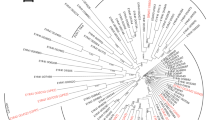Abstract
THE association of tabanid species with their eggs has been determined in only a comparatively few cases. Despite the local abundance of Tabanidæ in tropical, sub-tropical, and temperate countries, the egg-masses and egg-laying habits of many of our common species have consistently escaped the observation of investigators. Not only has the discovery of the eggs in Nature proved elusive, but also frequently the attempts to induce oviposition under controlled conditions in the laboratory have been attended with little or no success. Consequently the biology of many species that have been studied is incomplete. The reasons for this hiatus in our knowledge I have already discussed in a previous paper (“Tabanidæ of the Canadian Prairie”, Bull. Entom. Res., 17; 1926). Failure to find eggs has led investigators at various times to suggest that some species may deposit their eggs indiscriminately in the soil instead of ovipositing on the leaves and stems of semi-aquatic plants or on the surfaces of stones in or near water. This hypothesis would appear to be supported by the occasional finding of tabanid larvæ in comparatively dry soil at some distance from water. In western Canada Tobanus Reinwardtii Wied. and Chrysops fulvaster O.S. are common species, the eggs of which were not found although diligently sought in localities where these species were abundant. It was surmised that the eggs might be laid separately in the soil and thus render their discovery difficult. Both of these species were, however, induced to oviposit in glass jars in the laboratory, when they produced masses similar in all respects to those that are normally laid on leaves by other members of the family.
This is a preview of subscription content, access via your institution
Access options
Subscribe to this journal
Receive 51 print issues and online access
$199.00 per year
only $3.90 per issue
Buy this article
- Purchase on Springer Link
- Instant access to full article PDF
Prices may be subject to local taxes which are calculated during checkout
Similar content being viewed by others
Author information
Authors and Affiliations
Rights and permissions
About this article
Cite this article
CAMERON, A. Oviposition of Hæmatopota pluvialis Linne. Nature 126, 601–602 (1930). https://doi.org/10.1038/126601b0
Issue Date:
DOI: https://doi.org/10.1038/126601b0
Comments
By submitting a comment you agree to abide by our Terms and Community Guidelines. If you find something abusive or that does not comply with our terms or guidelines please flag it as inappropriate.



